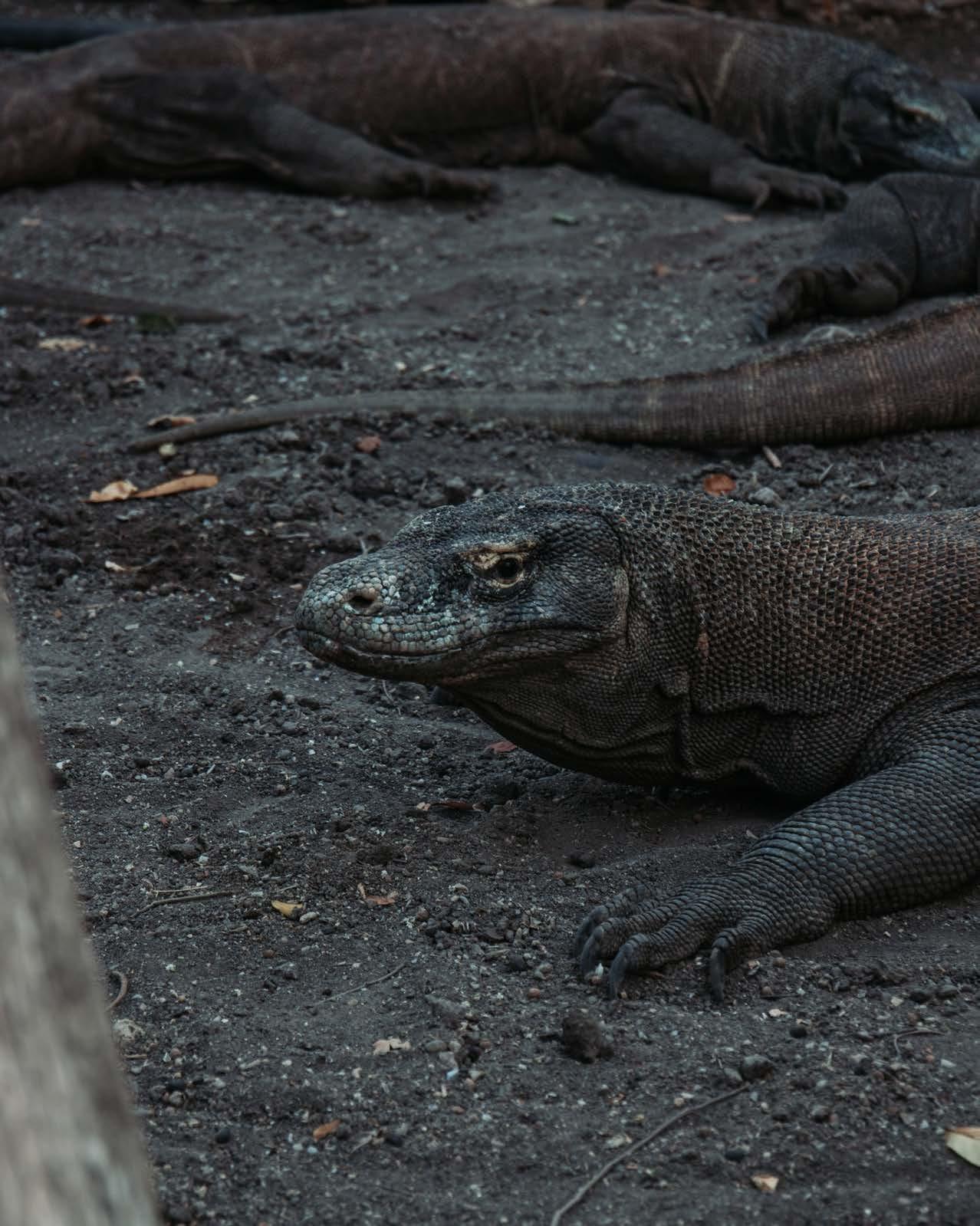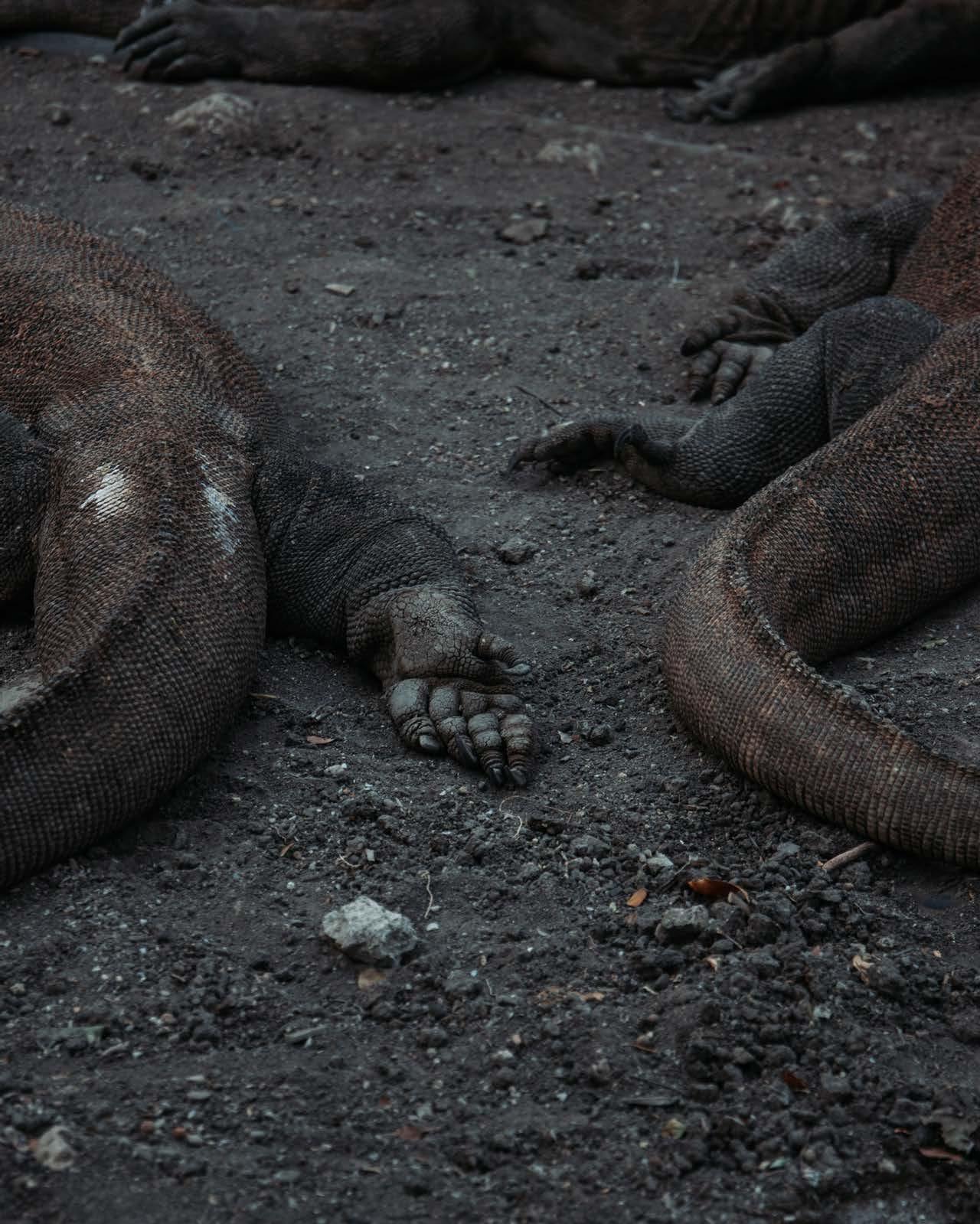
3 minute read
Nusa Tenggara, Indonesia by Fiona Mustain '20
Nusa Tenggara, Indonesia
Words & Photos by Fiona Mustain '20
Advertisement
My hair whips around my face as we make our way along the bumpy, dusty road down the coast to Labuan Bajo. The deep blue water reflects against the sun making it sparkle, and I can't wait to get in. The town of Labuan Bajo is located in the West Manggarai regency of Indonesia on the island of Flores. It has become a popular scuba diving base and gateway town for tourists to enter the Komodo National Park. My friend Garda, raised in Jakarta, begins to point out the numerous hotels, travel agencies, shops, restaurants, and dive centers along the main road. As we pass the third dive center in a row, he remarks how much the sleepy fishing village has changed in the years he has been coming to dive. Awe-struck tourists swarm off of diving boats, back from their morning excursions. Adara and Lino–our two other travel companions–grin at each other with excitement. The next morning, my alarm rings bright and early. Our plan is to head to the Komodo National Park, one of Indonesia's oldest national parks. Komodo is composed of multiple islands and 1,214 square kilometers of marine habitat. The park, known for the famous 'Komodo dragon,' is also home to thousands of coral species, fish, rays, dolphins, turtles, and sharks and is considered a UNESCO world heritage site.
The diving boat arrives; we begin to make our way between the picturesque hilly islands towards Manta Point. Several other boats head towards the same direction, and Garda explains how divers' numbers grew exponentially over the last five years. "The first to come were the Australians, then the Europeans and finally the Americans." Suddenly, the boat slows and our Captain points out a shadow deep in the water–a manta ray. Enthralled, we drop into the cool turquoise water and begin our descent to the reef.
The manta ray makes its way through colorful corals of various shapes and sizes until it fades entirely into the darkness below.
We spend the next hour gliding above the magnificent reef. Despite its beauty, I notice how some areas of the coral are damaged. The Captain explains that boats that anchor over the dive sites harm the reef ecosystem below. "It's not smaller fishing boats owned by locals, but net fishing from large boats that are causing the damage," he says. He mentions that in recent years illegal fishing has become rampant in the park as marine patrols have decreased. As the engine starts, the Captain shares his fear with us: "If the illegal fishing continues, I'm worried these waters will never be able to recover."


After a few Bintangs and a hike to the top of Padar Island, we decide to head towards Komodo Island. As the name suggests, Komodo Island is home to around 1,727 Komodo dragons. Due to the unpredictable nature of the species, tourists must be with a guide at all times during their visit. At first glance, the dragons seem slow and lazy. However, our guide explains they can move at lightning speed when they hunt, which is about once a week. We make our way around mating sites, which are guarded by alert female dragons. Adara notices the large number of dragons laying in the sun close to the tourist center where they feed on scraps of leftovers of tourists' meals. Our guide explains how the increasing number of tourists influences the animals' mating and hunting habits. In response, the island was to close for a year in 2020. However, this plan was canceled a few months later by Siti Nurbaya Bakar, Indonesia's environment and forestry minister. The local economy needed tourist dollars, which was deemed more important than the dragons.
I can't help but feel lucky to have seen the natural beauty of Komodo National Park and to realize the threat posed by unregulated economic growth. It is not too late, I feel, to construct a balance between economic benefits and conservation policies. The Captain, the guide, and my Indonesian friends all share my concerns. We are all very ready to take action and build community support to protect the environment, despite the government's disinterest.













